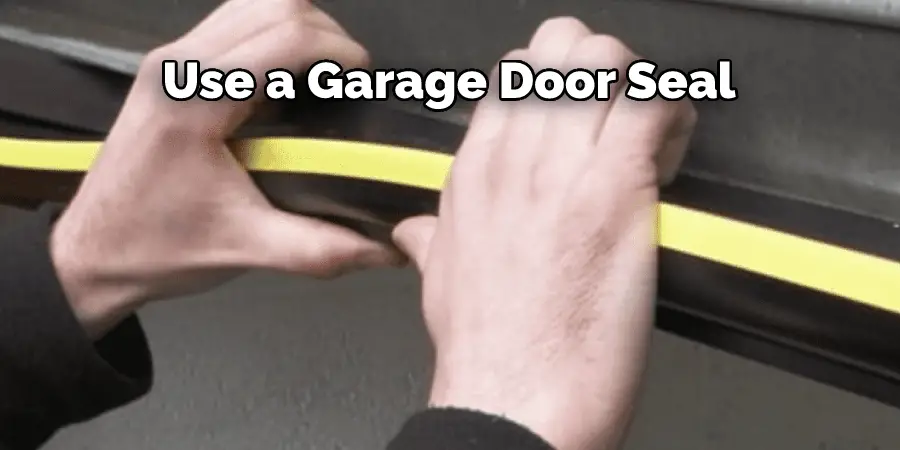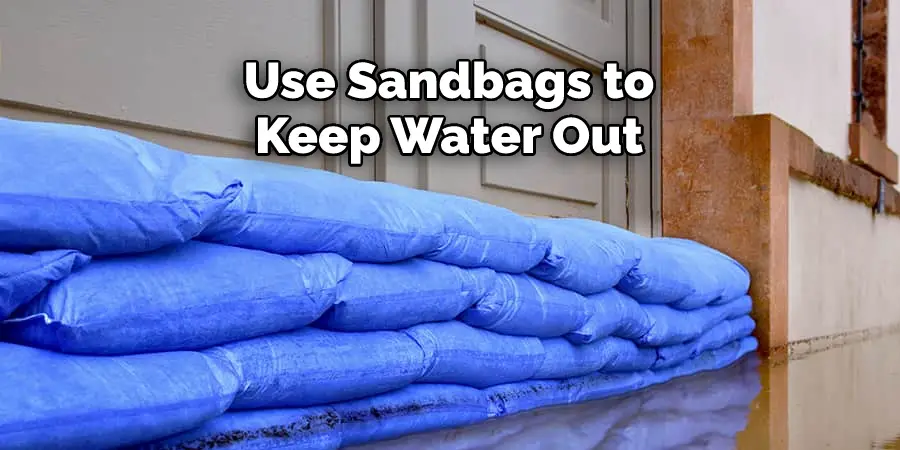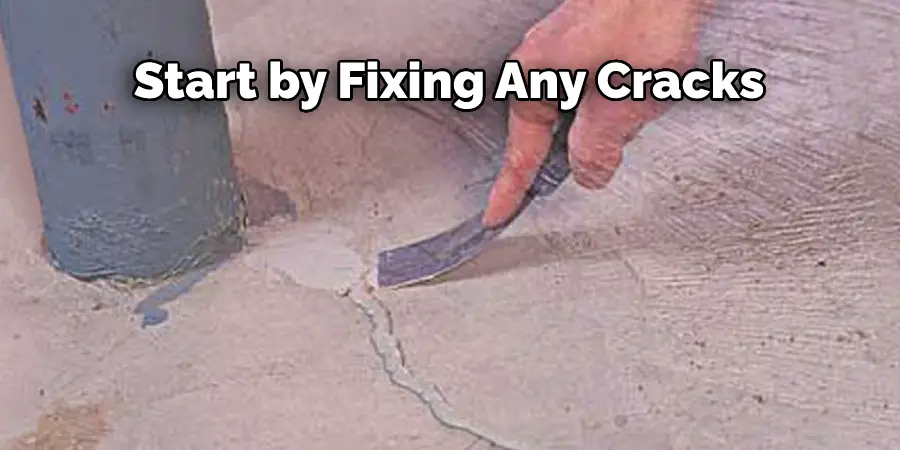For homeowners, dealing with rainwater in the garage can be an annoying and costly task. A wet and damp garage not only affects your belongings but can also cause damage to the structure of your home if left unnoticed. If you’re looking for ways to keep the water out of your garage, then you’ve come to the right place! In this blog post, we’ll walk you through a few tips on how to keep rainwater out of garage that might arise when rain makes its way into your garage. Find out how simple repairs, proper maintenance, and preventive measures can help protect your property from being damaged by excess moisture!

What to Put in Front of Door to Stop Flooding?
When it comes to keeping rainwater out of your garage, one of the best preventative measures is installing a door threshold. A door threshold acts like a barrier between the outside and inside of your garage and helps keep water away from the interior. It should be made from an impermeable material such as aluminum or plastic so that water won’t seep through. Additionally, the threshold should be slightly tilted so that water runs away from the door frame and not into it.
If you live in an area prone to flooding, you may also want to install a flood barrier, such as a flood gate or sandbags, in front of your garage door to further protect against flooding. Other preventative measures include regularly cleaning your gutters and downspouts, making sure that the ground around your garage is graded away from the structure, and sealing any cracks or gaps in the walls or foundation of your garage. Taking these steps can help keep rainwater out of your garage and save you a lot of hassle in the long run.-
By taking a few preventative measures, you can help keep rainwater out of your garage and avoid any costly repair or replacement that comes with water damage. A properly installed door threshold will stop any water from entering your garage and provide an extra layer of protection. Additionally, installing a flood barrier, such as a floodgate or sandbags, can help further protect your garage from flooding.
Regularly cleaning your gutters and downspouts, grading the ground around your garage away from the structure, and sealing any cracks or gaps in walls or the foundation of your garage are also important preventative measures to keep rainwater out of your garage. Taking these steps now can save you from a lot of trouble in the future.
10 Methods How to Keep Rainwater Out of Garage
1. Use a Garage Door Seal
One of the best ways to keep rainwater from entering your garage is to use a garage door seal. A seal will create a barrier between the bottom of your garage door and the ground, preventing water from seeping in.

There are a variety of different types of seals available, so be sure to choose one that is compatible with your garage door. When installing, make sure to measure the gap between your garage door and floor before purchasing, as different seals have different sizes.
2. Install Gutters
Another effective way to keep rainwater out of your garage is to install gutters. Gutters will collect rainwater as it falls from the roof and channel it away from your garage, preventing it from entering through the doors or windows. Be sure to clean your gutters regularly to prevent them from becoming clogged.
If you don’t have the time to do this yourself, you can hire a professional gutter cleaning service. Additionally, if you live in an area that receives a lot of rain, you may want to consider investing in seamless gutters. Seamless gutters are designed to prevent the buildup of debris and keep water flowing freely away from your garage.
3. Use Awnings
If you have doors or windows that are located near the edge of your roof, you can prevent rainwater from entering by installing awnings over them. Awnings will deflect rainwater away from the openings, keeping it out of your garage. They are also effective at keeping direct sunlight out of the space, reducing the amount of heat inside.
Additionally, they can serve as a decorative feature and can be customized to your own unique tastes and preference. Depending on the size of your awnings, you may need to hire a professional installation team to ensure that they are properly installed. However, if you opt for a smaller size, you may be able to install them yourself with the help of a few simple tools.
4. Extend Your Downspouts
Downspouts are the pipes that carry rainwater away from your gutters. If they are not properly installed, rainwater can pool around your foundation and eventually make its way into your garage. To prevent this, be sure to extend your downspouts so that they carry water at least 10 feet away from your home.

You can purchase downspout extensions at most hardware stores. Additionally, you may also want to consider installing a splash block or dry well to further protect your garage from water intrusion.
5. Grade Your Property
Another way to keep rainwater out of your garage is to grade your property so that it slopes away from the house. This will allow water to run off instead of pooling around your foundation. Be sure to consult with a professional before making any changes to your property grade. They can advise you on the best way to avoid any potential water damage. Additionally, if you need to add soil or other material in order to change the grade, be sure to use materials that are appropriate for your area.
6. Seal Cracks and Gaps
Water can easily enter during a storm if there are cracks or gaps in your foundation or around your doors and windows. To prevent this, be sure to seal any cracks or gaps with caulk or weather stripping. This will go a long way in keeping your garage dry and safe from the elements. If you’re unsure how to properly caulk or weather strip, be sure to consult a professional for help.
Additionally, check your foundation regularly for signs of wear and tear. If you do find any cracks or gaps, be sure to address them quickly in order to prevent water from entering your garage.
7. Install Drainage Pipe
Installing a drainage pipe is another effective way to keep rainwater out of your garage. The pipe will collect water as it runs off of your roof and channel it away from your home, preventing it from entering through openings in the foundation or walls. Be sure to slope the pipe away from your foundation and use a grate or cover to keep debris out.
When installing the drainage pipe, it is important to follow local codes and regulations. Additionally, if you’re not sure how to install it correctly, contact a professional for guidance. Taking these steps to properly install the drainage pipe will help ensure rainwater is diverted away from your garage and home.
8. Use Sandbags
If you live in an area that is prone to flooding, you can use sandbags to keep water out of your garage during a storm. Sandbags can be placed around the perimeter of your garage, creating a barrier that will prevent water from entering. Make sure to weigh down the sandbags with heavy objects so that they remain in place. Additionally, you can use sandbags along the sides of your garage door to create a seal that will help keep water out.

9. Install French Drains
A French drain is a type of drainage system that consists of a perforated pipe that is surrounded by gravel or other material. French drains are typically installed around the perimeter of a home and can be an effective way to keep water out during a storm.
10. Build an Elevated Platform
If you live in an area that is prone to flooding, you may want to consider building an elevated platform for your garage. This will allow you to park your car above the floodwaters, preventing damage. The platform can be made from a variety of materials, including wood and concrete.
It’s important to make sure that the platform is properly secured, as it can become unstable during heavy rains. Additionally, you should also install drains around the edges of your platform to prevent water from pooling up in any one area. This will help keep your platform and garage safe from the elements.

Conclusion
Water can seep into your garage in many ways. To prevent this, start by fixing any cracks in your foundation and sealing doors and windows. By following the tips in this blog post about how to keep rainwater out of garage, you can keep rainwater from getting into your garage and causing flooding or other damage. Make sure to clear leaves and debris from gutters and downspouts, seal cracks and gaps around doors and windows, and consider installing a backflow valve if your home is connected to a sewer system. With a little bit of preventative maintenance, you can avoid costly repairs down the road.
Rick is a handyman who grew up helping his dad with his business. He learned a lot from him about how to fix things, and also about how to work hard and take care of business. These days, Rick is still into fixing things- only now, he’s doing it for a living.
Rick is always looking for new ways to help people grow and develop. That’s why he started contributing to this blog: to share all his experience and knowledge so that he can help people who are interested in DIY repair.

